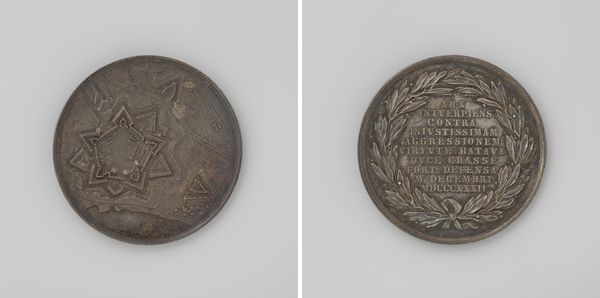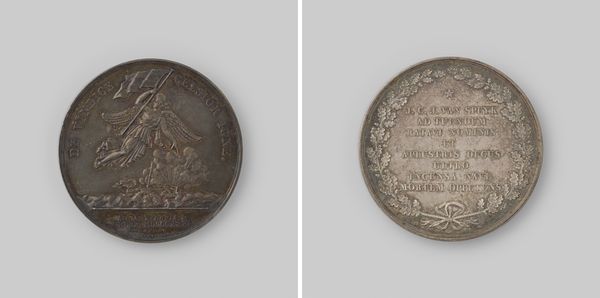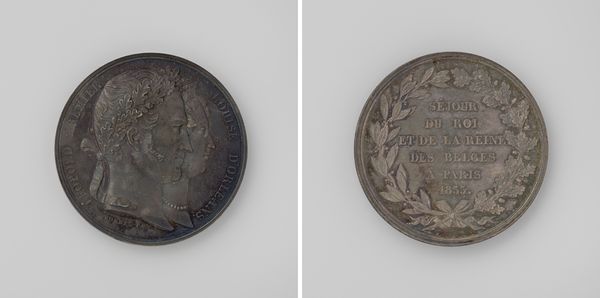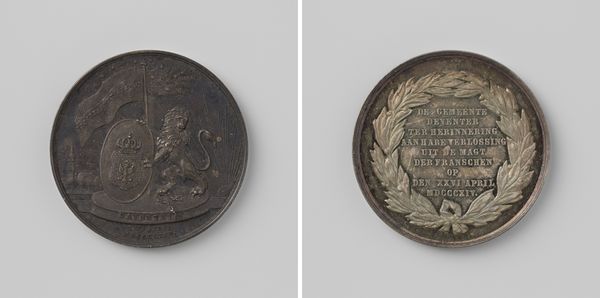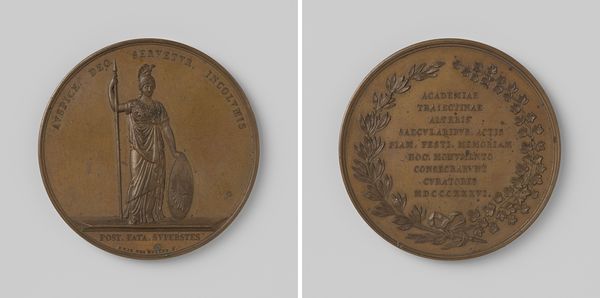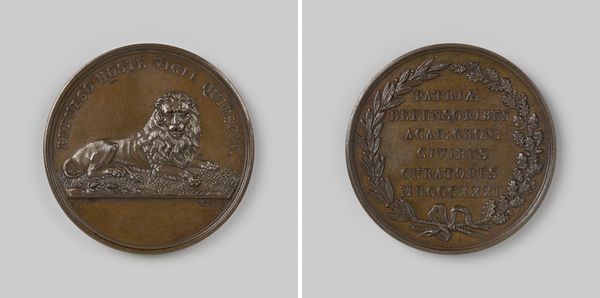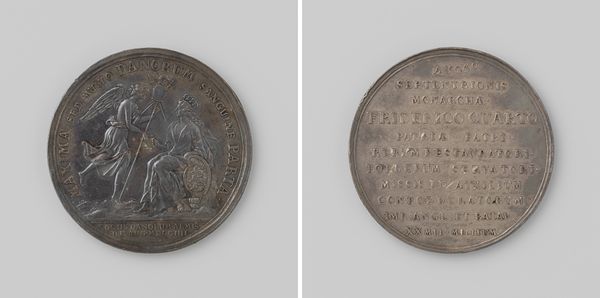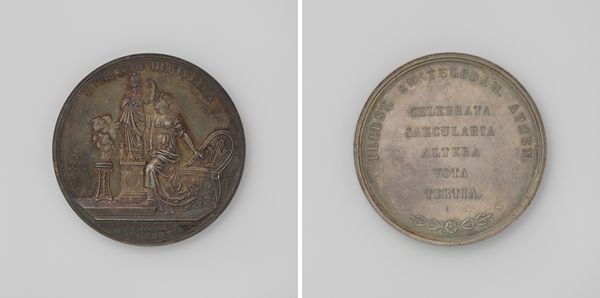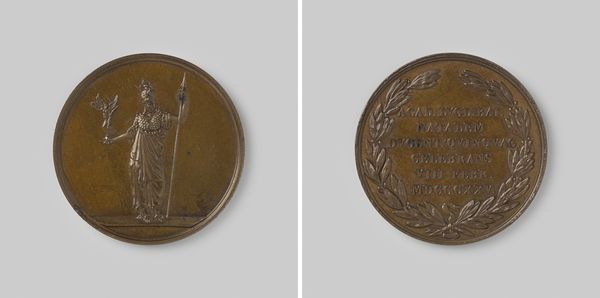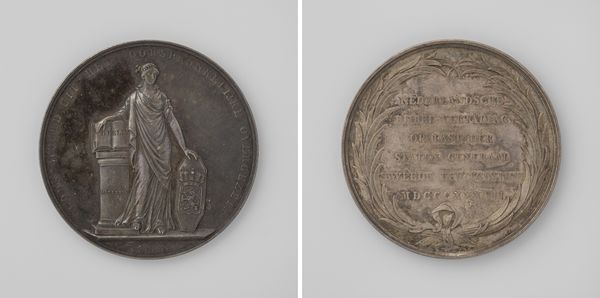
Tweehonderdjarig bestaan van de Hogeschool van Utrecht, penning geslagen op last van de curatoren 1836
0:00
0:00
davidvander18041879kellen
Rijksmuseum
print, metal, relief, sculpture
#
neoclacissism
#
allegory
# print
#
metal
#
relief
#
ancient-mediterranean
#
sculpture
#
history-painting
Dimensions: diameter 5.3 cm, weight 44.40 gr
Copyright: Rijks Museum: Open Domain
Curator: This commemorative medal from 1836, sculpted by David van der Kellen, celebrates the bicentennial of the Hogeschool van Utrecht. Editor: The cool, grey sheen of the metal is instantly striking. It feels so formal, almost austere, befitting a celebration of academic rigor. Curator: It's crafted from metal, very likely silver, and designed as a relief print. Note the fine detailing achieved through die-striking and engraving processes. These methods would have demanded skilled labour. Medals like these weren't just symbols, they were commodities circulating within specific networks of exchange. Editor: Absolutely. We have two distinct sides here. One shows the allegorical figure of Minerva, or Pallas Athena, goddess of wisdom and strategic warfare, towering above some text at the bottom. How complicit were academic institutions in upholding oppressive regimes during the time it was commissioned? Curator: The obverse side presents Minerva, spear in hand, with inscriptions invoking divine auspices, reflecting the perceived role of education and destiny within established social orders. The material substance itself and the repetitive minting process highlights how dominant ideology gets literally impressed upon and distributed amongst society. Editor: And the reverse showcases a laurel wreath encircling Latin text commemorating the anniversary itself, a closed loop reinforcing a sense of timeless, self-referential academic authority. How did access to this kind of formal education intersect with societal privilege? Who was celebrated here and who was actively excluded? Curator: These medals played a critical role, cementing connections between economic capital and state-sponsored systems of intellectual and artistic production, bolstering what we call 'high culture'. Looking closely, we can discern the impressions left behind on materials. Editor: Precisely, they act as time capsules that encapsulate very specific material, social, and political circumstances and power structures. Makes you wonder whose stories haven’t been preserved through these supposedly eternal materials. Curator: Thinking about artistic practice, these commemorative pieces offer insight into both the artisanal skill and social role demanded and consumed through artworks during that period. Editor: Absolutely, understanding how these objects came to be made encourages us to look beneath the polished surface to reveal the full intricate weave of social meanings behind them.
Comments
No comments
Be the first to comment and join the conversation on the ultimate creative platform.
